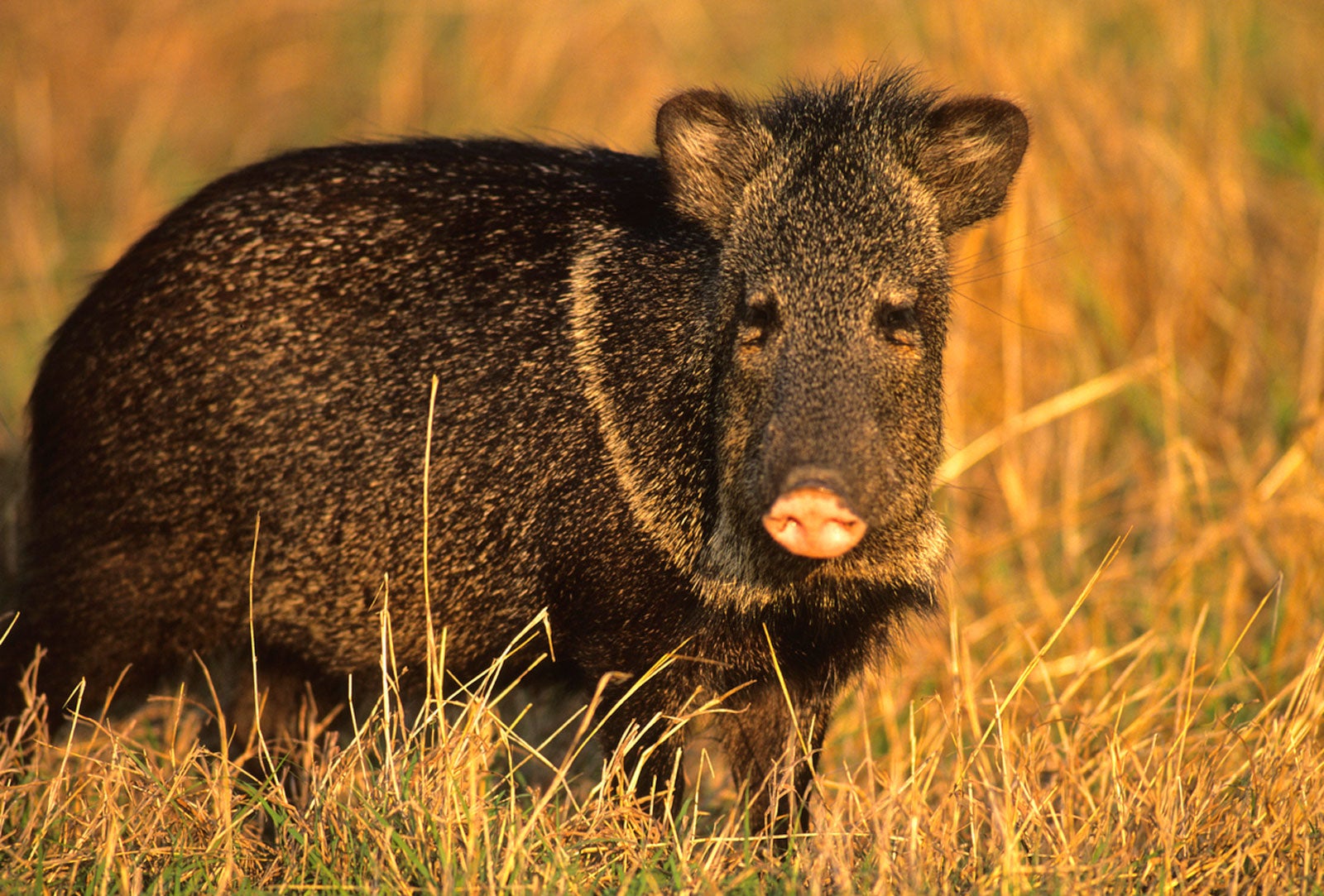What Is A Javelina: Ways Of Dealing With Javelinas In Your Garden


The javelina is an animal that haunts the American Southwest. What is a javelina? Wild pigs are common in many areas of the world and although the javelina resembles a pig, it is a peccary. Peccaries are in the same genus as our domesticated and wild pigs but on a slightly different branch of the group.
If you live in Arizona, for instance, and see a hairy, pig-like creature, it is probably a javelina. They range wild in Texas, New Mexico, Arizona, and south throughout Mexico, Central America, and Argentina. These tropical peccaries survive on a variety of foods; however, javelinas in a garden can pose a problem, where the abundance of cultivated produce is extremely attractive.
What is a Javelina?
If you live in the southwestern United States, down into South and Central America, you may have experience dealing with javelinas. Javelinas are in the order Artiodactyla, just like our common pigs. Where pigs are ‘Old World’ animals, javelina are ‘New World’ animals and in a completely different family.
They will eat almost anything, making javelina garden pests a real problem where food and water are abundant in the landscape. They will even eat puppies and kittens! The animals resemble small, hairy boars but are actually hoofed animals that travel in herds.
Dealing with Javelinas
Javelinas are opportunistic when it comes to their food. Since their range is so large, they are adapted to a great many menu items. They like prickly pear cactus, berries, nuts, bulbs, flowers, fruits, snakes, eggs, carrion, frogs, fish, you name it.
Javelinas in the garden will wreak havoc as they enjoy the smorgasbord that you work so carefully to preserve. Dogs can be effective deterrents to javelina garden pests but don't feed pets outdoors, and if you do, remove any leftovers promptly. Javelinas will also enter the garden if there is a constant source of water.
The recommended method of peccary control in areas where they are common is a 4-foot (1 m.) high fence. If a fence isn't practical, a low-voltage wire 8-10 inches (20.5-25.5 cm.) above the ground is sufficient.
Gardening tips, videos, info and more delivered right to your inbox!
Sign up for the Gardening Know How newsletter today and receive a free copy of our e-book "How to Grow Delicious Tomatoes".
You can usually keep them away by emptying any containers of standing water, keeping garbage cans tightly closed, picking up dropped fruits, and generally keeping your landscape clean and tidy so they are not tempted to enter.
Note: Javelinas are a game animal and a license is needed to hunt them. Killing them in the landscape is frowned upon and not recommended as peccary control.

Bonnie Grant is a professional landscaper with a Certification in Urban Gardening. She has been gardening and writing for 15 years. A former professional chef, she has a passion for edible landscaping.
-
 Create A Romantic Garden Straight Out Of Bridgerton: Regency Era Romance In Your Garden
Create A Romantic Garden Straight Out Of Bridgerton: Regency Era Romance In Your GardenTry some romantic garden ideas straight out of Bridgerton. Flowers and gardens in the Regency era were lush and charming and you can get the same look!
By Bonnie L. Grant
-
 Moody Blooms For Spring: 8 Types Of Black Flowers To Add Drama To Spring Displays
Moody Blooms For Spring: 8 Types Of Black Flowers To Add Drama To Spring DisplaysFrom midnight burgundies to inky violets, several types of black flowers can enrich and embolden a spring display. Try these brooding bloomers for a moody garden
By Tonya Barnett